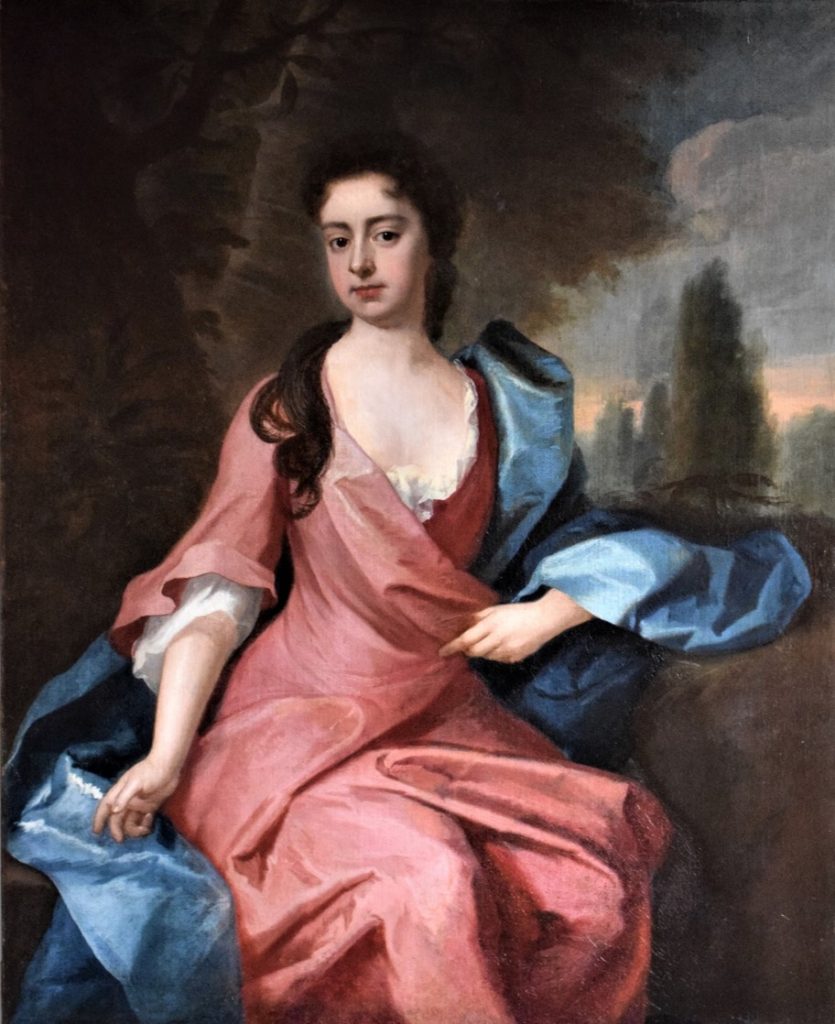Wednesday 15 September 2021 - Sunday 27 February 2022
10:30 am - 4:00 pm
Glynn Vivian Art Gallery is pleased to present the exhibition, ‘Indigo: Collections, Conservation, and Chemistry’, as part of the permanent collection displays. The exhibition revolves around the portrait painting of a young woman from the court of Queen Anne, from the Richard Glynn Vivian Bequest of 1911. Other items from the permanent collection enhance the display.

Through the painting, and more specifically the use of the pigment colour indigo, the display will explore the history of the period in which the painting was made, the chemical nature of pigments and paint recipes, along with art conservation materials, chemistry, and techniques. Viewers are encouraged to connect with these multiple aspects, in order to explore the importance of chemistry in arts and conservation as a unique tool in revealing secrets of the past.
After many years spent in storage, this oil canvas recently cleaned and restored by Glynn Vivian Conservation Officer (Oil Painting) Jenny Williamson, who has brought back to life and uncovered the vibrant colours of pigments typically used by artists in the early 1800s.
The question concerning the identity of the painter has been solved with the help of archives and analytical chemistry, where a variety of techniques were used, particularly when studying the blue pigment found in the dress of the young woman.
Dr Cecile Charbonneau, Dr Ann Hunter, and Katie Hebborn are a team of scientists at Swansea University, who share a common passion for chemistry and fine arts, and together with Jenny Williamson, they have been working together to determine the chemical nature of pigments found in the painting to collect clues essential to elucidating the painter’s identity.
Jenny Williamson said, ‘This collaboration has been really fascinating and what I have enjoyed about it is that it’s so multi stranded. I feel privileged that I could do the conservation work, which has revealed the quality and the colours of this painting. The scientists have all brought their different techniques and skills, which can look at this painting in a completely new way. I had not realised how many ways there are that we could look at the painting, which would all give us different information, and then, if we add in art historical research and stylistic analysis by experts, I feel we can have a whole new layer of understanding and insight into this painting.’
Dr Ann Hunter said, ‘It has been wonderful being involved in a project related to art and working with such talented scientists and art conservators. Working together as a team has shown how multi-disciplinary art and science can be, we have bounced ideas off each other and it’s been a really, really enjoyable process.’
Dr Cecile Charbonneau said, ‘My scientific career actually started at the Louvre Museum. When I was an undergraduate student, I was very fortunate to do a placement there, in their laboratories. In the last few years, I did not really meet with the art world but I continued developing skills that are relevant to it. And this project was for me, a way to go back to doing forensics science and analysis of art, which is something that was so dear to me.
This exhibition is a partnership with Swansea Council’s Glynn Vivian Art Gallery and Swansea University. Funded by a grant from The Royal Society of Chemistry Outreach Fund, with support from Glynn Vivian Art Gallery, Swansea Council, SPECIFIC, Beacon, Swansea University, with support from Engineering and Physical Sciences Research Council, and European Regional Development Fund.
Categories

